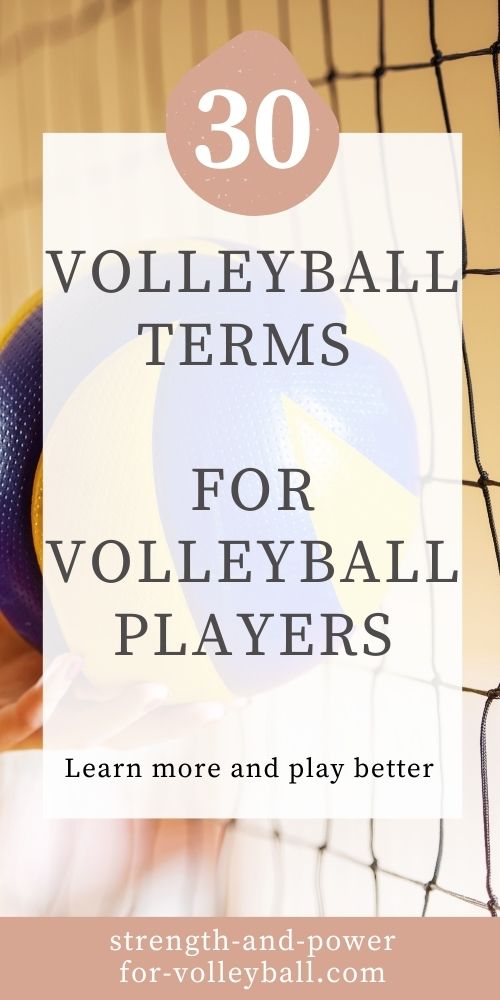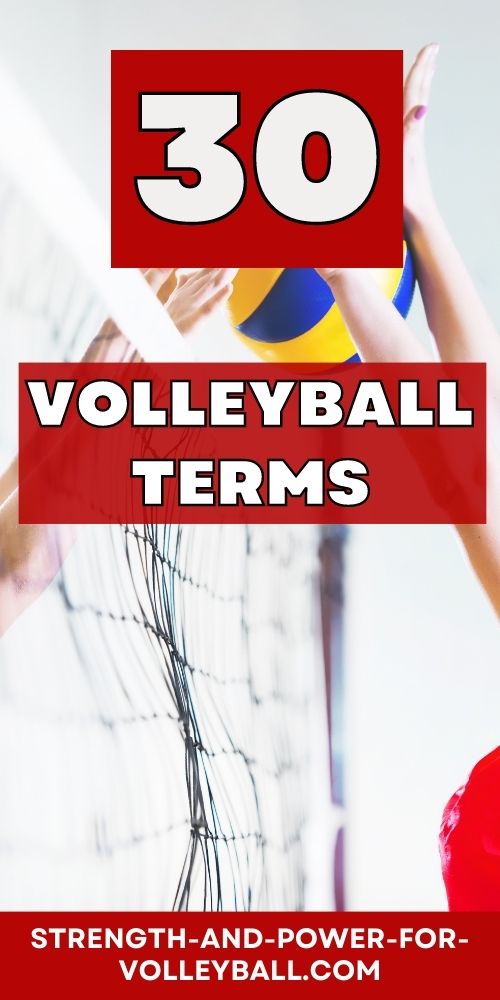Volleyball Terms to Know
Here are volleyball terms to know.
As a volleyball player, coach, or fan, you need to know the terminology.
30 Volleyball Terms to Know
Serve: The serve is the action that starts the set. The serve is the act of putting the ball into play by hitting it over the net to the other team.
Ace: An ace is a serve that lands in the opponent's court untouched, resulting in a point. For statistics, a serve may be scored an ace for any passed served ball that doesn't make it to a teammate. For example, a receiver making contact with the ball, but there isn't a teammate that can't make the next play.
Kill: A successful attack that results in an immediate point.
Block: A defensive play made at the net by jumping up and placing hands above the net to stop an opposing attack. Technically, a block is defined as ball coming from the opponent and deflected by a player near the net with a body part above the net at moment of contact. If there isn't a body part above the net then this is a soft-block, also the first team contact. Also, it's not required for the player to be jumping to be a blocker. What matters is where the player is. Part of the player's body must be above the net at the moment of contact. If the player isn't above the net, then it's not a block and the contact will be one of the three team contacts.
Dig: A defensive move where a player receives the ball from an opponent's attack.
Pass: A skill used to receive a serve or pass the ball to a teammate in a controlled manner. Most volleyball player's pass the ball by using the forearms or overhead finger action (setting).
Set: A skill used to place the ball in a position where a hitter can attack it. The setter "sets" the ball to an attacker.
Attack: An offensive move where a player hits the ball with the intent to score a point. An attack is any ball that is sent over the net to the opponent.
Spike: An attack where the ball is forcefully hit over the net with a downward motion. The term "spike" and "attack" are often used interchangeably.
Tip: A soft attack where the ball is directed with fingertips instead of being hit with full force. The hitter will often "tip" the ball in order to have more control placing the ball into the opponent's court.
Joust: A situation at the net where two opposing players contact the ball simultaneously.
Rotation: The clockwise movement of players around the court after each side-out. When the receiving team wins the rally, the receiving "rotates" and now becomes the serving team.
Side-out: When the serving team fails to score a point, resulting in the ball being awarded to the other team. Side-out is an old school term used back before all sets became rally scoring.
Libero: A specialized defensive player who wears a different colored jersey and can replace any back-row player. Libero replacements aren't counted as team substitutions.
Middle blocker: A front-row player who is responsible for blocking in the middle of the net.
Outside hitter: A front-row player who attacks from the left side of the court.
Opposite hitter: A front-row player who attacks from the right side of the court.
Back-row attacker: A player who jumps and attacks the ball from behind the 3-meter line.
Rotation fault: An error that occurs when players rotate out of order. When a team is "out of rotation" at the moment of serve contact, the referee will blow the whistle and make the call.
Foot fault: An error that occurs when a player steps over the end line while serving.
Antenna: The vertical rods attached to the net that mark the boundaries of the court. The ball can't hit the antenna. When sending the ball over the net, the ball must cross the space between the two antennas.
Net violation: A fault that occurs when a player touches the net during play. Different organizations have different rules for net violations. For example, school volleyball, you can't touch the net at any time. In club and college volleyball, it's when playing the ball you can't make contact with the net.
Overhand serve: A serve where the ball is tossed and hit with an overhand motion.
Underhand serve: A serve where the ball is hit with an underhand motion.
Jump serve: A serve where the player jumps before hitting the ball over the net.
Quick set: A fast set to a middle attacker, usually resulting in a quick attack.
Dump: A surprise attack by the setter where they tip the ball over the net instead of setting it to an attacker.
Pancake: A defensive move where a player dives and extends one hand flat on the floor to keep the ball off the ground.
Side spin: A type of spin that causes the ball curve to the side when hit.
Top spin: A type of spin that causes the ball to drop quickly when hit, making it difficult to pass or receive.
If you enjoyed these tips and would like to keep it close to you at any time, just save this pin to your Pinterest Volleyball Training Board.

